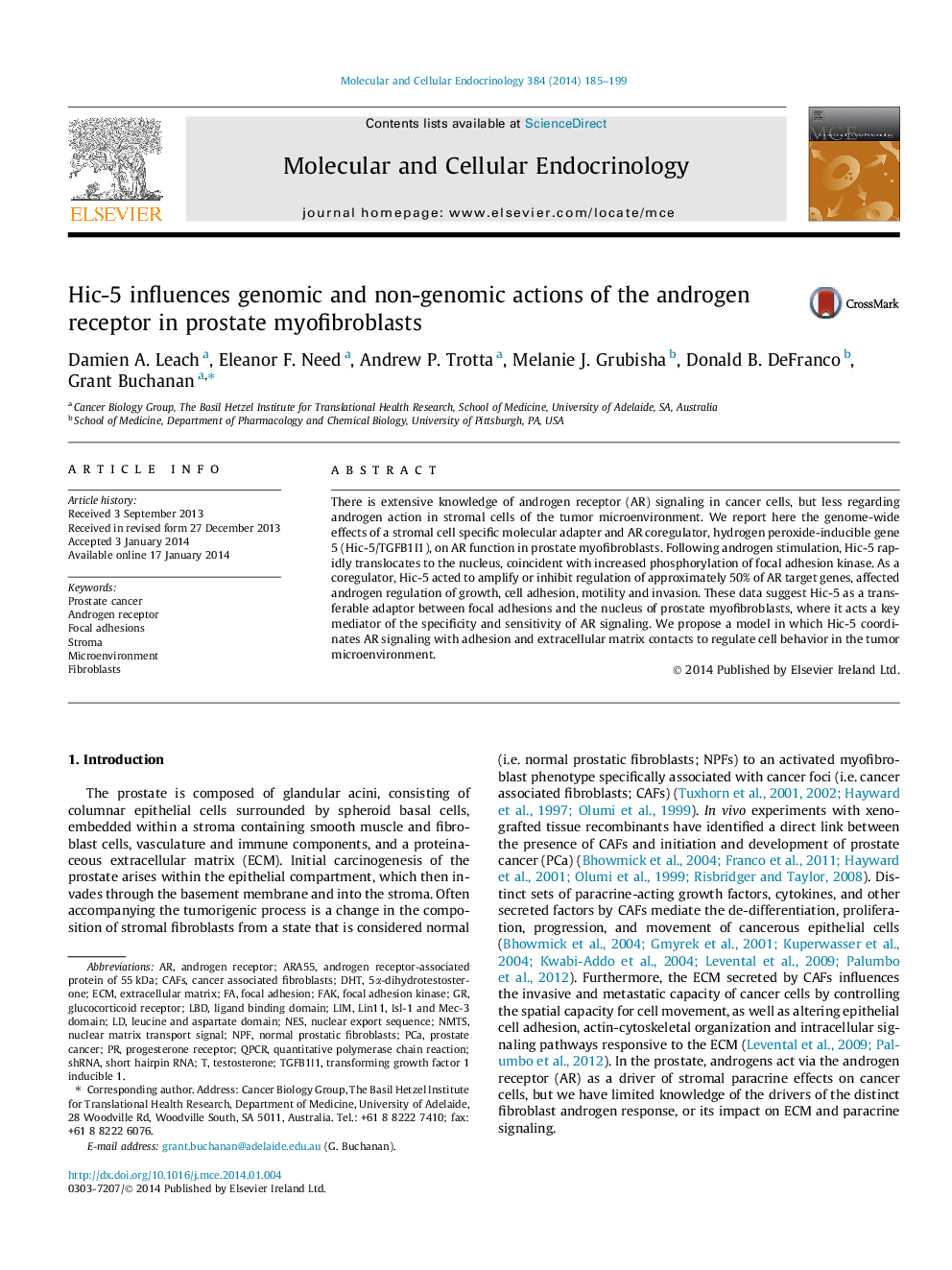| Article ID | Journal | Published Year | Pages | File Type |
|---|---|---|---|---|
| 2196061 | Molecular and Cellular Endocrinology | 2014 | 15 Pages |
•First global perspective of coregulator effects on AR action in fibroblasts.•Hic-5 has mixed regulatory affects on AR activity.•Androgen inhibits fibroblast migration and invasion and is enhanced by Hic-5.•FAK phosphorylation and Hic-5 translocation is coincident with a fast effect of androgens on cell adhesion.•We provide a new model in which Hic-5 bridges focal adhesion activity with AR signaling.
There is extensive knowledge of androgen receptor (AR) signaling in cancer cells, but less regarding androgen action in stromal cells of the tumor microenvironment. We report here the genome-wide effects of a stromal cell specific molecular adapter and AR coregulator, hydrogen peroxide-inducible gene 5 (Hic-5/TGFB1I1), on AR function in prostate myofibroblasts. Following androgen stimulation, Hic-5 rapidly translocates to the nucleus, coincident with increased phosphorylation of focal adhesion kinase. As a coregulator, Hic-5 acted to amplify or inhibit regulation of approximately 50% of AR target genes, affected androgen regulation of growth, cell adhesion, motility and invasion. These data suggest Hic-5 as a transferable adaptor between focal adhesions and the nucleus of prostate myofibroblasts, where it acts a key mediator of the specificity and sensitivity of AR signaling. We propose a model in which Hic-5 coordinates AR signaling with adhesion and extracellular matrix contacts to regulate cell behavior in the tumor microenvironment.
